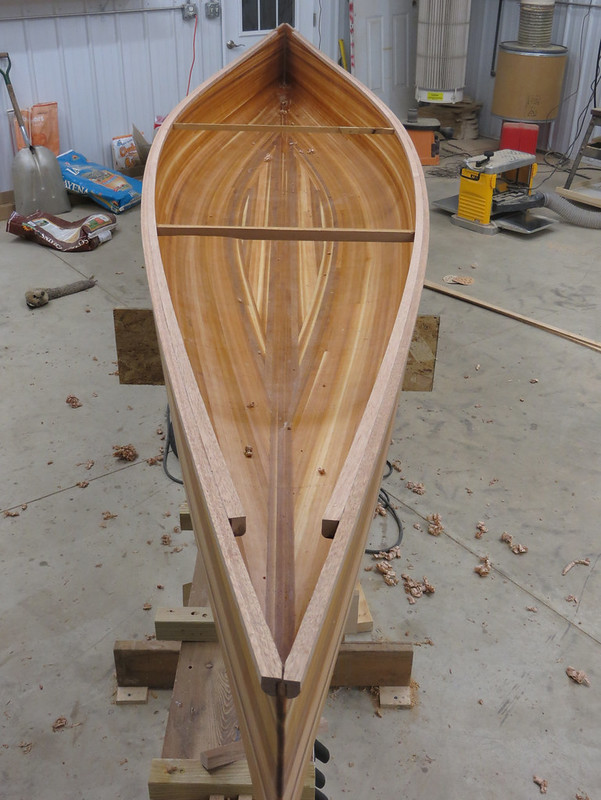I would stop before cutting into the cloth. You look to have it pretty good, try wetting an area with water to see if there is sanding marks. A quick sand with finer paper might be all that is needed.
That's pretty much all I plan on doing from here, just a quick pass with finer grits to get rid of swirl marks. I'll see how bad they show up with water.
You don't necessarily need to have tanks (bulkheads). You will have decks and thwarts for strength. The tanks on Christine's stripper are sealed and they were more an after thought. I doubt I would put tanks in another build, more-so a personal choice really. Rather than just plugs why not purchase hatch covers and make the space use-able?
I've thought about hatches but don't know if I want to go to the trouble, though it would be nice. That still doesn't solve the problem (is it really a problem?) of pressure differential caused by temperature/altitude extremes. I'm assuming the rubber plugs installed by the manufacturer somehow allow pressure/vacuum relief if the pressure is too great but still seals against water intrusion. Biggest reason I have for installing them is to hide the bow/stern ugliness. I don't knock myself out sanding the final few inches that are tough to reach or getting the cloth perfect in that area.
Alan








